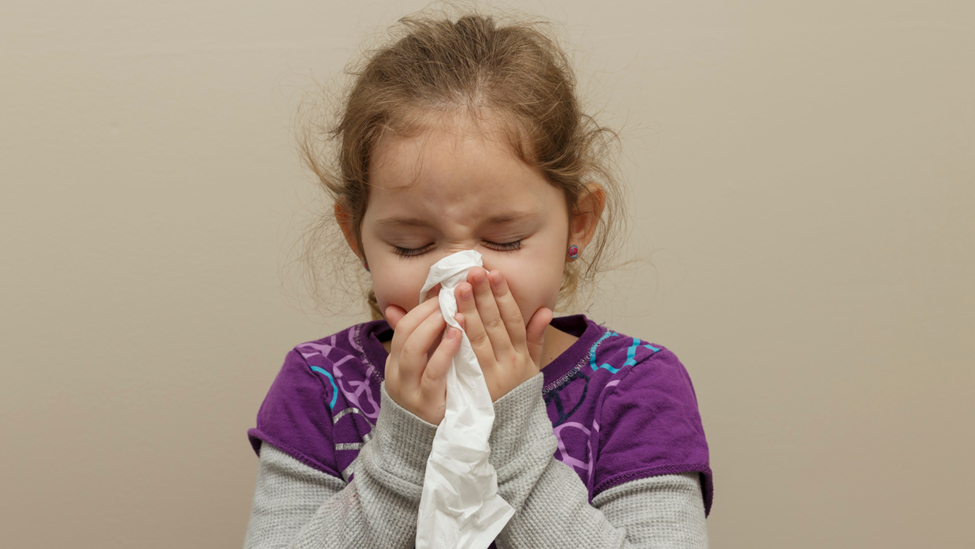Childhood allergies can lead to a host of issues beyond the usual sneezing and congestion. For many kids, these allergies may contribute to frequent ear infections, difficulty breathing, and even poor sleep quality. Early intervention is crucial for long-term health, and being able to recognize signs and symptoms of an allergy play an important role in diagnosis and treatment.
Allergies can significantly impact the shape and function of the mouth. Chronic nasal congestion often forces children to breathe through their mouths, which can alter facial development over time. This mouth breathing can lead to changes in the alignment of the jaw, palate, and teeth, affecting both appearance and oral function. These changes can have a dramatic impact on the child’s occlusion and tooth development and may trigger TMJ Disorder if not addressed early.
Signs and symptoms of an allergy or sensitivity in a child can vary depending on the allergen and the child’s sensitivity level. Here are some common signs to watch for:
- Skin Reactions:
- Rashes: Red, itchy, or bumpy skin rash, such as hives or eczema.
- Swelling: Especially around the face, lips, or eyes.
- Dry, scaly patches: Often on the cheeks, arms, or legs.
- Digestive Issues:
- Vomiting: Frequent or severe vomiting after eating.
- Diarrhea: Loose or watery stools, sometimes with mucus or blood.
- Constipation: Difficulty passing stools, sometimes with discomfort.
- Gas and bloating: Painful gas, leading to f
- Respiratory Symptoms:
- Wheezing: A high-pitched sound while breathing, often a sign of an allergic reaction.
- Coughing: Persistent or dry cough.
- Nasal congestion: Stuffy or runny nose, often without a cold.
- Sneezing: Frequent sneezing, especially when no other cold symptoms are present.
- Behavioural Changes:
- Irritability: Unusual fussiness or irritability, often without an obvious cause.
- Sleep disturbances: Difficulty sleeping or frequent waking due to discomfort.
- Anaphylaxis (Severe Allergic Reaction):
- Difficulty breathing: Severe wheezing or shortness of breath.
- Swelling of the face or throat: Leading to difficulty swallowing or breathing.
- Pale or blue skin: Especially around the lips and fingers.
- Lethargy: Extreme tiredness or lack of response.
- Rapid heartbeat: A fast or irregular heartbeat.
When evaluating the shape and size of a child’s mouth and nose, certain key factors can indicate overall health and normal development. Here are the main aspects to consider:
- Mouth Shape and Function:
- Symmetry: The child’s mouth should be symmetrical, with both sides appearing similar in shape and size.
- Lip Structure: Lips should be full and well-formed, with no clefts or irregularities. The upper and lower lips should meet without difficulty.
- Palate Formation: The roof of the mouth (palate) should be intact and properly formed. A smooth, uninterrupted palate indicates no cleft issues.
- Tongue Size and Movement: The tongue should be appropriately sized for the mouth, able to move freely, and not appear too large or small for the oral cavity. There should be no signs of tongue-tie, which can restrict movement.
- Jaw Alignment & TMJ: The jaw should be aligned so that the child can close their mouth comfortably, without the lower jaw protruding excessively or receding.
- Nose Shape and Function:
- Nose Structure: The nose should be centrally located, symmetrical, and proportional to the child’s face. It should have a smooth contour without any noticeable deformities.
- Nasal Passages: The nasal passages should be clear and unobstructed, allowing for normal breathing. Any flaring of the nostrils could indicate breathing difficulties.
- Breathing Ease: The child should breathe easily through their nose without snoring, whistling, or other noises. This suggests well-functioning nasal passages.
- Size of Nostrils: The nostrils should be proportionate to the size of the nose and face, allowing for adequate airflow.
- Growth and Development:
- Proportionality: The size of the mouth and nose should be in proportion to the child’s head and face. Unusual proportions may warrant further evaluation by a paediatrician.
- Normal Respiratory Function: There should be no signs of chronic nasal congestion, difficulty breathing, or other respiratory issues, which could be indicative of structural or functional problems in the nose.
- Tongue Position During Sleep:
- Neutral Position: The child’s tongue should rest comfortably within the mouth during sleep, typically resting against the roof of the mouth (palate) without pressing against the teeth or causing any obstruction.
- No Obstruction of Airway: The tongue should not fall back towards the throat, which could partially obstruct the airway and lead to breathing difficulties such as snoring or sleep apnea.
- No Mouth Breathing: Ideally, the child should breathe through their nose during sleep. If the tongue is positioned correctly and the nasal passages are clear, the child is less likely to mouth-breathe, which can sometimes indicate issues like enlarged tonsils or adenoids.
- Tongue-Tie Consideration: If a child has a tongue-tie, it can sometimes affect the tongue’s resting position during sleep, potentially leading to issues with breathing.
If you notice any abnormalities, check in with your doctor for further evaluation. Early detection can prevent larger issues, like TMJ Disorder later on in life.
– Written by Dr. Agatha Bis




